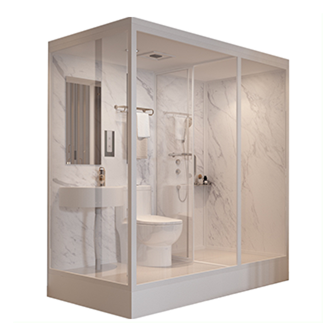Dec . 05, 2024 01:57 Back to list
low e tempered glass
Understanding Low-E Tempered Glass Benefits and Applications
Low-E (low emissivity) tempered glass is a high-performance glazing material that's gaining widespread popularity in both residential and commercial buildings. Renowned for its energy efficiency and durability, low-E tempered glass is designed to address the modern demands of architecture and building efficiency. This article explores what low-E tempered glass is, its benefits, and its various applications.
What is Low-E Tempered Glass?
Low-E tempered glass is a type of glass that has been treated to enhance its strength and thermal performance. The tempered aspect refers to the process of heating the glass and then cooling it rapidly to increase its strength, making it up to five times stronger than regular glass. This durable material also has a special coating that reflects infrared radiation while allowing visible light to pass through. The low-emissivity coating plays a vital role in reducing heat transfer, thus improving the insulation properties of windows and glass structures.
Benefits of Low-E Tempered Glass
1. Energy Efficiency One of the most significant advantages of low-E tempered glass is its energy efficiency. The glass helps keep homes and buildings warm in the winter and cool in the summer by minimizing heat loss and gain. This translates into lower energy bills and a reduced carbon footprint, making it an eco-friendly choice for modern construction.
2. UV Protection Low-E tempered glass also provides excellent protection against harmful ultraviolet (UV) rays. These rays can cause fading and damage to furniture, flooring, and artwork. By filtering out a significant percentage of UV radiation, low-E glass helps preserve indoor items and improve the longevity of interior decor.
3. Enhanced Comfort With its ability to regulate temperature and reduce glare, low-E tempered glass creates a more comfortable indoor environment. Homeowners can enjoy consistent temperatures without hot or cold spots, making spaces more enjoyable to inhabit.
4. Structural Integrity The tempering process significantly enhances the glass's structural integrity, making it a safer option for windows, doors, and facades. In the unfortunate event of breakage, tempered glass shatters into small, blunt pieces instead of sharp shards, reducing the risk of injury.
low e tempered glass

5. Aesthetic Appeal Low-E tempered glass is available in various finishes and can be customized to fit diverse design preferences. Its clear appearance allows for maximum natural light while maintaining the aesthetic value of a building.
Applications of Low-E Tempered Glass
Low-E tempered glass is versatile and applicable in various environments
- Residential Buildings Many homeowners are now opting for low-E tempered glass in windows and doors to improve energy efficiency and comfort. This is particularly beneficial in homes located in regions with extreme weather conditions.
- Commercial Buildings Office buildings, shopping centers, and hotels utilize low-E tempered glass to enhance their environmental performance. The material not only helps reduce energy costs but also contributes to a more pleasant working or shopping atmosphere.
- Curtain Walls and Facades Low-E tempered glass is widely used in architectural facades and curtain walls, providing both aesthetic appeal and high performance. It allows architects to create visually striking designs while adhering to energy efficiency standards.
- Skylights In spaces where natural light is desired, low-E tempered glass skylights can bring in ample sunlight while regulating indoor temperatures and preventing excess heat buildup.
Conclusion
Low-E tempered glass represents a significant advancement in glazing technology, combining durability, aesthetic appeal, and energy efficiency. As more builders and homeowners recognize the benefits of this innovative material, it is likely to become a standard choice in the construction and renovation of properties. By investing in low-E tempered glass, one not only enhances the structure's beauty but also contributes to a more sustainable and efficient future.
-
Safety and Style with Premium Laminated Glass Solutions
NewsJun.24,2025
-
Reinvents Security with Premium Wired Glass
NewsJun.24,2025
-
Premium Float Glass Line for Modern Architecture
NewsJun.24,2025
-
Low Emissivity Glass for Energy-Efficient Architecture
NewsJun.24,2025
-
High-Performance Insulated Glass Solutions for Modern Architecture
NewsJun.24,2025
-
Elevates Interior Style with Premium Silver Mirror
NewsJun.24,2025
Related PRODUCTS














